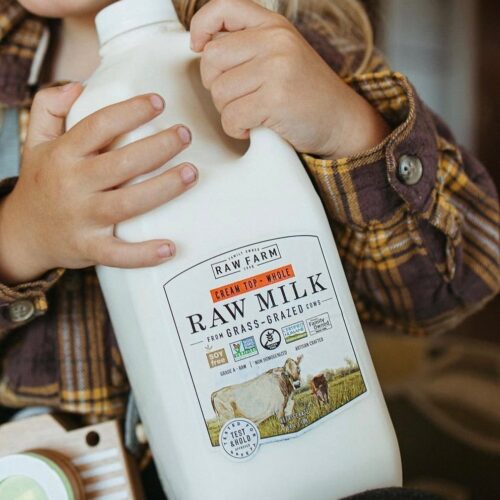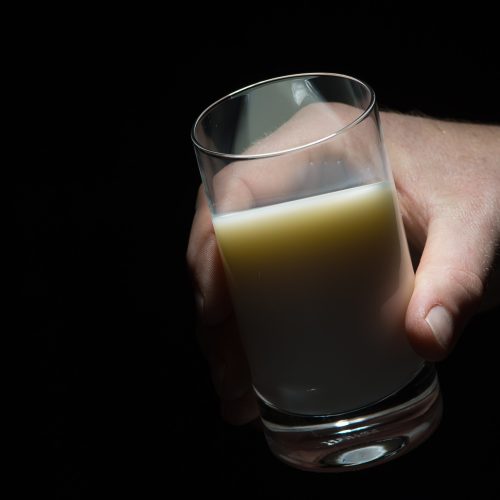A glass of milk's worth of calcium has been linked to a lower colorectal cancer risk. Here are 6 foods you might not know contain the mineral.

vaaseenaa/Getty Images
- The amount of calcium in a glass of milk could lower the risk of colorectal cancer, a study on women found.
- Many foods, including seeds, canned sardines, and figs, are high in calcium.
- The studies comes as cases of colorectal cancer in people under 50 rise in the US.
Consuming the amount of calcium found in a glass of milk could reduce the risk of colorectal cancer, according to a new study involving women.
That was regardless of whether the calcium came from dairy or non-dairy sources. Foods such as figs, leafy greens, and tofu are among the non-dairy sources of calcium.
In the study published on Wednesday in Nature Communications, the authors said this suggests calcium itself, rather than milk, was the main factor responsible for cutting the risk.
Using dietary and health data provided by more than 542,000 women with an average age of 59 over for around 16 years, researchers from Oxford University studied whether 97 foods affected colorectal cancer risk. They found that consuming an extra 300mg of calcium a day was associated with a 17% lower colorectal risk from the baseline. In the US, the lifetime risk of developing the disease is approximately 4.4% for men and 4.1% for women.
Calcium is commonly known as a mineral the body needs to build and maintain strong bones. But calcium may have a protective effect against colorectal cancer because it binds to bile acids and free fatty acids in the colon, which helps reduce their cancer-causing potential, the study said.
Colorectal cancer is the third-leading cause of cancer-related death in US men and the forth-leading cause in US women, according to The American Cancer Society. The rate of people being diagnosed with the condition has fallen since the mid-1980s, but in people under 55, rates have been increasing by 1% to 2% a year since the mid-1990s.
The link between colorectal cancer risk and diet is well-established, and experts recommending people cut down on ultra-processed foods and red meat, and instead eat plenty of fruits, vegetables, and whole grains. But the new findings could help provide even more targeted dietary guidance.
The study was observational, meaning the researchers didn't intervene in any way, and more research is needed to confirm a link between calcium intake and cancer risk.
"It is difficult to separate the effects of individual nutrients from an effect of milk per se," Tom Sanders, professor emeritus of nutrition and dietetics at King's College London, said.
"We already know that around half of all bowel cancers could be prevented by having a healthier lifestyle, and this new research supports this, with a particular focus on dairy," Lisa Wilde, director of research and external affairs at the charity Bowel Cancer UK, said. If you don't drink dairy milk, there are other ways you can get calcium and still reduce your bowel cancer risk, she added.
Americans should consume around 1,000mg of calcium a day, according to the Office for Dietary Supplements.
Here are six foods that are high in calcium, including some that might surprise you.
Seeds
Some seeds pack a punch when it comes to calcium content.
One tablespoon of sesame seeds, for example, contains 100mg of calcium, while one tablespoon of poppy seeds contains 127mg or around 10% of the daily recommended amount.
They are also high in other nutrients such as fiber and healthy fats.
Whey protein
As well as being high in protein and helping to promote muscle growth, whey protein powder is very high in calcium.
A 1.2-ounce scoop of whey protein powder isolate contains about 160 mg or 12% of the daily recommended amount.
Leafy greens
Leafy greens are rich in many nutrients, including calcium.
One cup of cooked collard greens has 268 mg of calcium, or about 21% of the amount the average person needs in a day. And kale has around 250 mg of calcium per 100g, which is more than the 110mg in 100g of whole milk.
Spinach and chard contain lots of calcium, but they also contain a group of molecules called oxalates that bind to calcium and make it unavailable to our bodies.

vaaseenaa/Getty Images
Tofu
Whether it's firm, soft, or silken, tofu is also a good source of calcium. 120g of the plant-based protein steamed or fried contains 200mg of calcium.
Edamame beans, which are young soybeans, also contain the mineral.
Canned fish
Canned fish is higher in calcium than fresh fish because it contains bones that have become soft through cooking and can be eaten.
Canned sardines and salmon are particularly rich in calcium, with 60g of canned sardines in oil containing 240 mg, while 85 grams of canned salmon with bones contains 19% of the daily recommended amount.
Figs
Dried figs contain more calcium than any other dried fruit. Just two figs have 100 mg or 10% of the calcium we need each day.
They are also high in fiber, copper, potassium, manganese, magnesium, and vitamin K.



